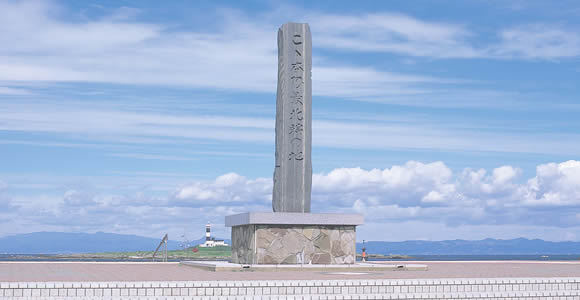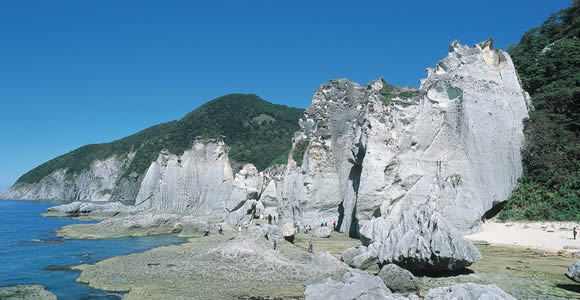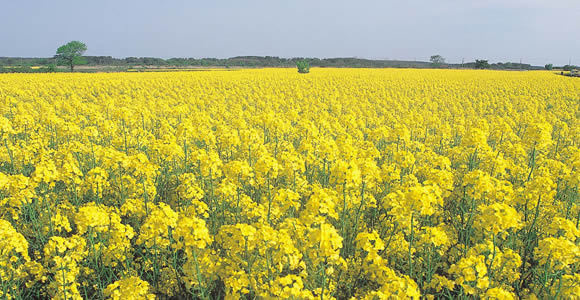

Omazaki of Oma-machi is located at the northernmost tip of Honshu, Japan's main island. It is at 41°33' north latitude and 140°58' east longitude and from here the distance to cape Shiokubi of Hokkaido is a mere 17.5 km.
At the tip of the cape, a barren sandy field stretches out and there is a stone monument that reads, "This is the northernmost tip of Honshu." As you stand there and see Hokkaido lying right before your eyes, it really makes you feel that you are actually at the northernmost end.
There is playground and promenade, and even a campground for putting up tents around the cape. MAP


This is located almost in the middle of the west coast of the Shimokita Peninsula. This seacoast that stretches about 1.5 km from Fukuurazaki to Ushitaki with lines of fantastically-shaped rocks and sharp cliffs is one of Japan's scenic spots, and is designated as a natural monument.
Hotokegaura was once called Hotokeuta, which comes from the Ainu word "uta" meaning seashore. White odd-shaped rocks sharpened by the rough waves and storm stand everywhere like a line of Buddhist statues, presenting the beauty of natural formative art. These fantastically shaped rocks have been given names that take after actual Buddhist statues and objects, drawing great admiration from visitors and locals. MAP


The rape flower field of Yokohama-machi boasts an area of 200 hectares and is the largest in Japan. The field becomes covered in yellow in mid May.
Every year, the third Sunday of May is the day of the Rape Flower Festival in Yokohama.
Many events and attractions are offered during the flower festival, such as the rape flower marathon, rape flower concert, rape flower labyrinth, rape flower photography event, rape flower carriage rides, helicopter rides, and sales of local produce, attracting crowds of visitors daily. MAP



















